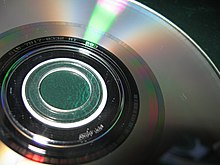
The Dreamcast is the final home video game console manufactured by Sega. It was released on November 27, 1998, in Japan; September 9, 1999, in North America; and October 14, 1999, in Europe. It was the first sixth-generation video game console, preceding Sony's PlayStation 2, Nintendo's GameCube, and Microsoft's Xbox. The Dreamcast's 2001 discontinuation ended Sega's 18 years in the console market.
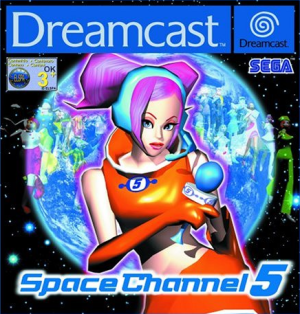
Space Channel 5 is a music video game developed and published by Sega. Originally released for the Dreamcast, it was later ported to the PlayStation 2. A version for the Game Boy Advance (GBA) was published in 2003 as a Western exclusive. Following space-faring reporter Ulala as she investigates an alien invasion, players engage in rhythm-based combat where Ulala mimics the actions of rivals in time to musical tracks.

Shenmue is a 1999 action-adventure game developed by AM2 of CRI and published by Sega for the Dreamcast. It follows the teenage martial artist Ryo Hazuki as he sets out in revenge for the murder of his father in 1980s Yokosuka, Japan. The player explores an open world, fighting opponents in brawler battles and encountering quick time events. The environmental detail was considered unprecedented, with numerous interactive objects, a day-and-night system, variable weather effects, non-player characters with daily schedules and various minigames.
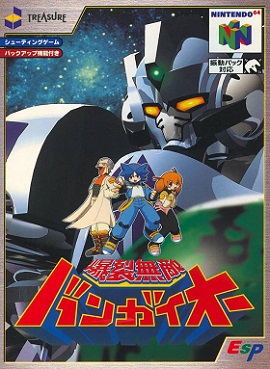
Bangai-O is a multidirectional shooter developed by Treasure and released in 1999 on the Nintendo 64 in Japan. It was ported to the Dreamcast worldwide shortly after with some gameplay changes and updated graphics and audio. The game places the player in control of a weaponized mech that can hover across large stages and fire at enemies all around them. The player must reach the end of each stage and defeat the boss, while avoiding hazards scattered across the map such as enemy mechs and gun turrets.

Phantasy Star Online is an online role-playing game (RPG) developed by Sonic Team and published by Sega in 2000 for the Dreamcast. It was the first successful online RPG for game consoles; players adventure with up to three others over the internet to complete quests, collect items and fight enemies in real-time action RPG combat. The story is unrelated to previous games in the Phantasy Star series.

ChuChu Rocket! is an action puzzle game developed by Sonic Team and published by Sega. Released for the Dreamcast in 1999, it was the first game for the system to support online console gaming. Players must place arrows on a board to lead mice into escape rockets while avoiding cats. The game features single-player modes in which a player must save all the mice on a board, and a multiplayer mode in which players battle to collect the most mice.
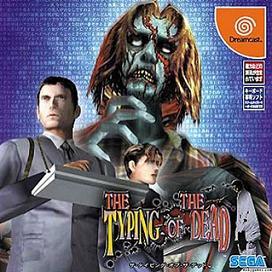
The Typing of the Dead is an arcade game that was developed by WOW Entertainment and published by Sega for the NAOMI hardware. The game was released in Japanese arcades in 1999 and was ported to the Sega Dreamcast in 2001 by Smilebit. A Microsoft Windows version was released in 2000 and a PlayStation 2 port followed in 2004.
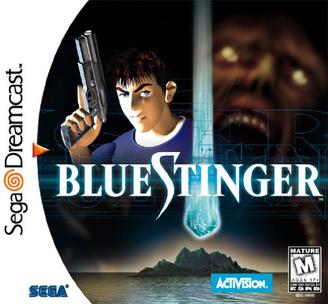
Blue Stinger is a 1999 action-adventure game developed by Climax Graphics for the Dreamcast. It was published by Sega in Japan, and by Activision in Western territories as a console launch title. The story follows emergency rescuer Eliot Ballade after he is stranded on the monster-infested Dinosaur Island and allies with fellow survivors and the alien being Nephilim to find the source of the monsters. Gameplay has Eliot navigating Dinosaur Island, fighting monsters using various weapons found or purchased during the game, and finding items to progress to other areas.
Homebrew, when applied to video games, refers to software produced by hobbyists for proprietary video game consoles which are not intended to be user-programmable. The official documentation is often only available to licensed developers, and these systems may use storage formats that make distribution difficult, such as ROM cartridges or encrypted CD-ROMs. Many consoles have hardware restrictions to prevent unauthorized development.

The Dreamcast is a home video game console by Sega, the first one introduced in the sixth generation of video game consoles. With the release of the Dreamcast in 1998 amid the dot-com bubble and mounting losses from the development and introduction of its new home console, Sega made a major gamble in attempting to take advantage of the growing public interest in the Internet by including online capabilities in the console as a selling point. As such, the Dreamcast was the first console to include a built-in modem for Internet support and online play. Sega would end up leaning heavily into the online capabilities to sell the Dreamcast as hype grew for Sony's then-upcoming competitor, the PlayStation 2, which also promised online gaming in addition to its DVD capabilities.

The Dreamcast video game console had several light guns released as accessories during its lifespan. The official light gun from Sega was released in Europe and Asia; in the United States, it was previewed in magazines preceding the console's release, but it ultimately never released due to concerns about bad press in the wake of the Columbine High School massacre. Instead, an officially licensed light gun was released by Mad Catz for the U.S. market.

Armada is a video game developed and published by Metro3D. It was released for the Sega Dreamcast in North America on November 26, 1999. Armada is a shooter role-playing game (RPG) that allows up to four players to fly about the universe, fighting the enemy, performing missions and improving their ship.
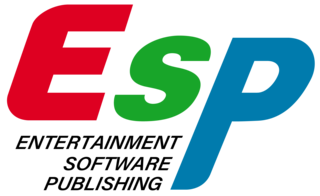
Entertainment Software Publishing, Inc. (ESP) was a Japanese video game publisher headquartered in Shibuya, Tokyo. It was founded in 1997 as a publisher for games developed by the Game Developers Network (GD-NET). GD-NET, which included companies such as Treasure and Game Arts, was established due to concerns over smaller developers not having the same financial backing like larger game companies did, as production of console games was beginning to rise. ESP was best known for publishing shoot 'em ups and role-playing games. While primarily a publisher, ESP also developed a handful of games internally.

The Official Dreamcast Magazine was a video game magazine for the Dreamcast video game console published in the United States. It was published by Imagine Media.

The Dreamcast VGA Box is an accessory for the Dreamcast, a video game console produced by Sega, that allows it to output to a computer monitor or a high-definition television (HDTV) set through a VGA connector in 480p, otherwise known as progressive scan. The Dreamcast was one of the first consoles to support 480p and HDTV in general. Sega released the VGA Box as an official accessory in Japan on January 14, 1999, at an MSRP of ¥7000; it was only available in the United States via Sega's online store, retailing between $30 and $50. Though the VGA Box did not receive a release in Europe, PAL consoles can use it since it has no regional lockout.
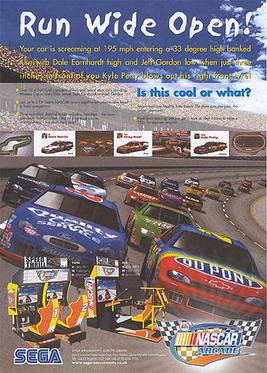
NASCAR Arcade, initially known as NASCAR Rubbin' Racing outside North America, is a 2000 racing arcade game developed by Sega Rosso and released by Sega. It was produced at the suggestion of producer Kenji Arai, and the soundtrack was produced by Jun Senoue. The game is based on NASCAR, and carries an official license with permission from EA Sports, which permitted Sega to develop the game as a coin-op only title.

The PlayStation 2 (PS2) is a home video game console developed and marketed by Sony Computer Entertainment. It was first released in Japan on 4 March 2000, in North America on 26 October 2000, in Europe on 24 November 2000, and in Australia on 30 November 2000. It is the successor to the PlayStation, as well as the second installment in the PlayStation brand of consoles. As a sixth-generation console, it competed with Nintendo's GameCube, Sega's Dreamcast, and Microsoft's Xbox. It is the best-selling video game console of all time, having sold over 155 million units worldwide, nearly triple the combined sales of its competing consoles.
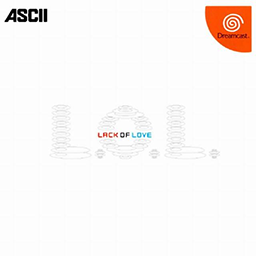
L.O.L: Lack Of Love is an evolutionary life simulation game developed by Love-de-Lic and published by ASCII Corporation for the Sega Dreamcast. The game was released only in Japan on November 2, 2000. The game was never exported to the West but it received a fan translation in 2020.

